Rising damp, condensation and damp through your walls
If you need help on any type of property problem please feel free to give us a call
1stAssociated.com can offer you help and advice on property problems with dampness, condensation, wet rot, dry rot, woodworm, cracking and movement. We also carry out residential and commercial building surveys, boundary surveys, home buyers reports, or help advise on any other property matters.
Please call us Free on 0800 298 5424 to talk to a surveyor.
Rising damp
This is probably the most frequently diagnosed type of dampness, yet interestingly there is substantial evidence that this type of dampness does not exist at all. Jeff Howell, in his book The Rising Damp Myth, spent many years trying to produce dampness in brickwork, without much success (which in itself actually was a success!) as part of his research at South Bank University in London and there has also been much research carried out by the Building Research Establishment (originally were the Government department that researched building problems and now a private equivalent), as far back as the 1960's and again in the 1980's, couldn't find the illusive rising damp.

Common sense says there is no such thing as rising damp
We would refer you to such articles, such as those produced by M Richards in 1987 If you can't see it, it probably isn't rising damp from Structural Survey magazine and P Roper 1984 Chemical DPC's Under the Microscope Most Rising Damp Isn't from the Building Trades Journal. We would also ask you to carry out the following common sense questionnaire.
Very old properties don't tend to have any damp proof course at all, yet many are not damp. Why?
Some reasonably old properties have slate damp courses; some are damp and some are not. Again, we would ask why?
A modern damp proof company puts liquid into a wall to stop rising damp. How do they know when the liquid has formed a distant barrier around the brickwork
Should the liquid be pumped into the brickwork or the mortar joint? A clue with the answer, think where you typically drill the holes.
But, the specialist damp proof company surveyor used a damp proof meter and showed me there was rising damp
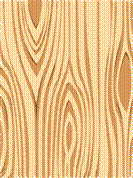
This is always an interesting question, as the damp proof meters can detect all sorts of things as well as rising damp. The electronic damp meters that they use are conductivity meters and measure the conductivity of electricity through materials, which vary. These damp proof meters, commonly known by the most popular trade name of Protimeter, have usually been set up to diagnose dampness based upon wood and therefore use what is known as the wood differential scale.
First of all you need to look to see if it has been used on any other material but timber. Secondly, you have understand how to interpret the readings; both if it is being used on timber or other materials, such as plaster, paintwork, etc, and thirdly you need to check that the damp proof specialist surveyor hasn't got his fingers over the conductivity pin to make the unit ring!
Interestingly, we have heard it argued that in a house any moisture that is in the air would be heavier and therefore settle to the lower part of the house, and therefore the lower part of the wall causing condensation, so this is what is being detected.
Electronic damp meters, commonly known as Protimeters
It should be remembered that the meters were designed to test for dampness in timber and they are frequently used to test for dampness in plaster, although a wood differential scale has been used. There is also the possibility of the damp proof meter conducting with any metal that is nearby, such as foil backed plasterboard, or pipes in the wall and there is always the chance that the damp proof specialist surveyor has accidentally put his hand against the damp proof meter and obtained a reading that way.
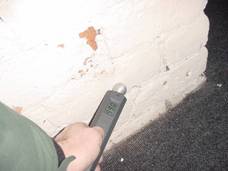
Using a Protometer
Example of wrongly diagnosed rising damp
We have actually seen one case of rising damp that wasn't rising damp in an old property, which had been extended and altered over the years, and which has resulted in large areas of roofing discharging onto other large areas of roof (these being the extensions), which in turn made the gutters overflow whenever it rained heavily and discharge down the wall. This water coming down the wall met up with all the water coming off the garden where it had been paved and the nearby driveway where it had been paved, and this all resulted in water sitting against the base of the wall.
The effect was the rising damp in this case, the cause was the overflowing gutters, the patio and the driveway discharging the water against the walls.
Please see our articles dampness for a more detailed view.
Condensation
Commonly, condensation is misdiagnosed as rising damp.
Several clues to condensation:
If there is a lot of humidity in the room and not very much ventilation, such as in a bathroom or a shower, where there isn't an extract fan, then it is likely to be condensation.
If you can see a blackness to the walls, which some people would describe as mould, this is also condensation.
The solution is to improve ventilation, which is ironic when we spend so much time and effort in modern properties stopping ventilation with plastic windows, doors, etc. Another way of getting rid of condensation, along with ventilation, is to add insulation.
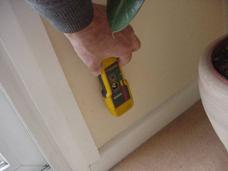
Taking a damp meter reading
Lateral dampness, also known as penetrating damp or falling damp, as it is often caused by rain
This is where dampness comes through the wall and could be, for example, a rusted or cracked cast iron guttering or downpipe. We have also seen it where water has been held by ivy on the property and this causes spalling brickwork by the freeze thaw action of the water expanding and contracting as it freezes and thaws. We have found this quite frequently on Victorian and Edwardian properties close to bay windows, where the original two inch downpipe has either been blocked or replaced badly and is allowing dampness in. Therefore, this is an area that is worth looking at if this is the type of property you have.
Dampness to valley gutters
Equally, we have found dampness to the valley gutter areas, where it can get into the walls, particularly where there is, for example, a butterfly roof, which leads into a hopper head, and this can often overflow and cause the water to discharge down the wall. Unfortunately, or should we say fortunately, there is a relatively easy way of checking this, that is next time it is raining hard you need to go outside and inspect how the gutters and downpipes are dealing with the water.
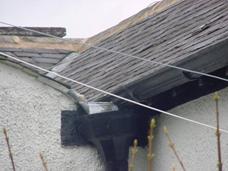
Valley gutter
Leaking pipes
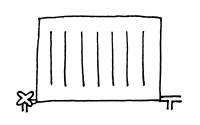
This can relate to anything from a leaking radiator pipe or radiators, to a leaking hot and cold water supply pipe, to leaking drainage pipes, to the tails of old disused piping set within the wall. With the exception of the radiator pipes, where we have seen minor leaks, we haven't seen any major leaks in these areas over the many years we have been carrying out surveys and we certainly haven't knowingly seen any damp from leaking pipes. We have heard of pinhole leaks in radiator pipes that have occurred, although we haven't actually seen it, due to a cheap supply of piping that came over to the country many years ago.
The area where we have seen problems is with regard to defects in the drainage, particularly in Victorian and Edwardian properties, where drains have leaked over many years and this has resulted in movement in the property and the leaking water has forced its way into the property. In one particular case it was actually the drains from the neighbouring property that was causing the problem and there was an excessive amount of groundwater pressure that was forcing it up in the kitchen on the party/shared wall.
We did once see an excellent video which showed how an outside water supply for the garden had expanded and contracted due to the cold, causing cracks within the wall.
Independent expert property advice
If you truly do want an independent expert opinion from a surveyor with regard to structural surveys, building surveys, structural reports, engineers reports, specific defects report, dampness issues, dilapidations, home buyers reports or any other property matters please contact 0800 298 5424 for a surveyor to give you a call back.
Independent expert commercial advice
If you have a commercial property, be it leasehold or freehold, then you may wish to look at our Dilapidations Website at www.DilapsHelp.com and for Disputes go to our Disputes Help site www.DisputesHelp.com .
We hope this dampness article has made you think
We hope you found the article of use and if you have any experiences that you feel should be added to this article that would benefit others, or you feel that some of the information that we have put is wrong then please do not hesitate to contact us (we are only human).
The contents of the website are for general information only and is not intended to be relied upon for specific or general decisions. Appropriate independent professional advice should be paid for before making such a decision.
All rights are reserved the contents of the website are not to be reproduced or transmitted in any form in whole or part without the express written permission of 1stAssociated.com
Dampness in Buildings - Basics Article
Dampness in Buildings - Technical Article
Resolving Dampness in your Basement
Shared Freehold and Problems with Dampness
Please see our section on:
If you require any information about Dampness in Properties please telephone us for help and advice 0800 298 5424

